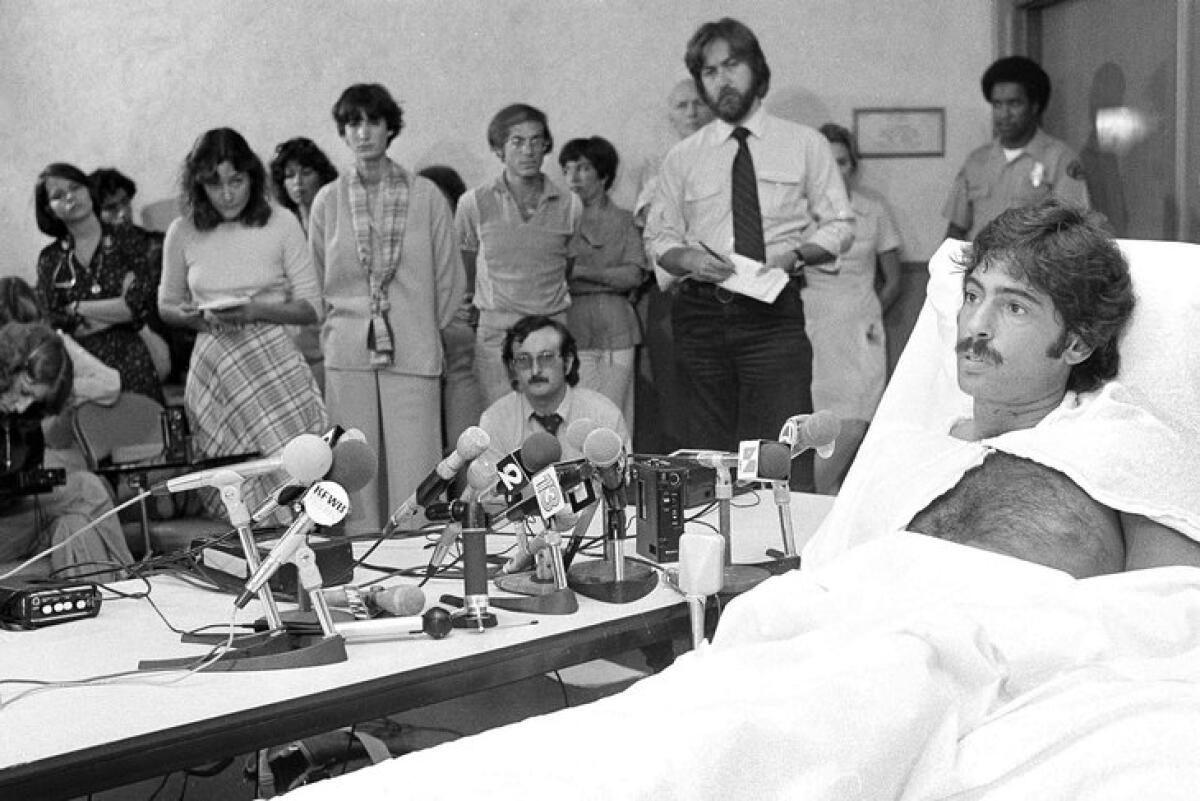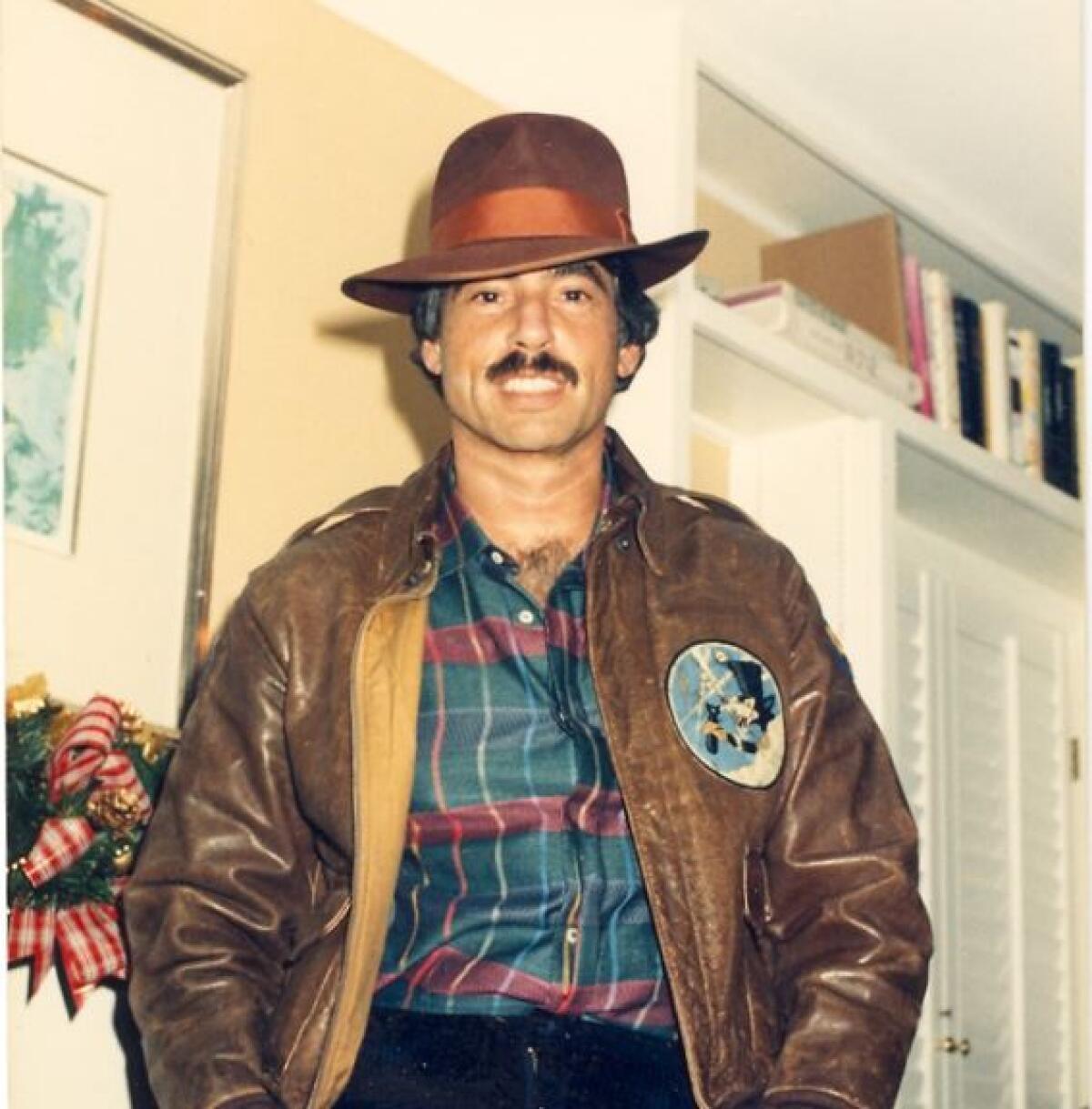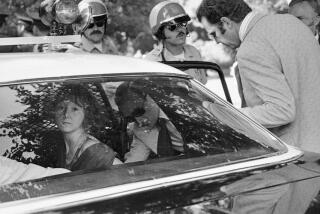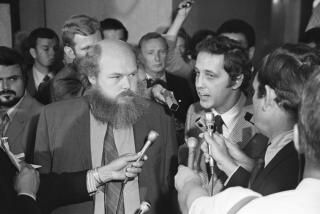Paul Morantz dies; L.A. attorney nearly killed when cult planted rattlesnake in his mailbox

As he charged after the cults and quasi-religious and self-help groups he believed had duped, imprisoned or brainwashed his many clients, it wasn’t lost on Paul Morantz that he was putting himself in peril.
After winning a $300,000 judgment against Synanon, a once respected drug rehab group that had devolved into a paranoid, paramilitary cult, the ice under his feet got even thinner.
Returning to his Pacific Palisades home in late 1978 after another busy day at his law office, Morantz pulled into his driveway and got out of his car to grab the mail.
Coiled inside the mailbox was a 4 ½-foot rattlesnake. When the box opened, the snake didn’t hesitate, and Morantz slumped to the ground, writhing in pain.
A neighbor tied a tourniquet around his arm in an effort to slow the venom from coursing through his body while the police corralled the rattler, beheaded it with a shovel and bagged what was left as evidence.
The rattlesnake attack and the eventual revelations about the dark edges of the Santa Monica-based cult became one of the many strange storylines of the 1970s, an era that historian Keven Starr once called “the goofiest decade of the century in California in terms of its sheer ominous weirdness.”
One of the nation’s leading authorities on cults that masqueraded as churches, schools, self-help centers and wellness movements, Morantz died Sunday at UCLA Santa Monica Medical Center, his son Chaz said. He was 77. No cause was given.
Their names are mysterious — Mazdaznan, Thelema and Synanon, to name a few — but their playbooks have been remarkably similar. Here’s a look at crackpot credos that flourished and foundered in L.A.
During a long career as a trial attorney, Morantz tangled with the Church of Scientology, the Hare Krishnas, est founder Werner Erhard and Peoples Temple, a San Francisco-based religious order that exploded into the headlines when the cult’s leader, Jim Jones, led a mass suicide in Guyana that left 909 people dead.
“Sometimes,” Morantz told The Times after the rattlesnake attack, “I wish that I didn’t know anything about cults.”
Morantz, who grew up in L.A. and attended USC as a journalism major, had planned to become a sportswriter. He was an editor at the Daily Trojan and was offered a job as a sportswriter after he graduated. When he got a look at the pay, he changed course and decided to go to law school instead.
He worked as a public defender before opening his own practice. His opening salvo was spectacular — a class-action lawsuit on behalf of a group of homeless people who claimed they’d been kidnapped, placed in nursing homes at the state’s expense and had their Social Security benefits stolen. The suit convinced county supervisors to open an investigation and the district attorney’s office to form a task force on nursing-home crimes.
As Morantz lay for six days in a hospital bed recovering from the rattlesnake bite, police and reporters began to put the pieces together. A car that a neighbor had seen pull away from Morantz’s house was traced to a ranch in Tulare County where Synanon spiritual leader Charles Dederich operated a commune. A search of the vehicle turned up a fingerprint that matched one of Dederich’s so-called “Imperial Marines,” a no-nonsense security detail unafraid to employ violence should the moment call for it.
Police arrested Dederich on suspicion of conspiracy to commit murder and two of his Imperial Marines — one being the son of Big Band leader Stan Kenton — on attempted murder charges for placing the rattlesnake in the mailbox.

During a lively seven-week preliminary hearing, prosecutors played a tape recording of Dederich discussing how his followers should handle lawyers such as Morantz.
“I’m quite willing to break some lawyer’s legs and then tell him, ‘Next time, I’m going to break your wife’s legs, and then we are going to cut your kid’s ear off. Try me. This is only a sample.’ ”
The hearing also served as a sampler box of Synanon’s alleged extremes — members forced to dissolve existing marriages and select new partners, members held against their will, mandatory abortions for women, guns and munitions stockpiled. And then there was the snake, now floating in formaldehyde and introduced as Exhibit 1.
Dederich and his two followers pleaded no contest, avoiding trial. The followers each got a year in jail while Dederich was sentenced to five years’ probation and ordered to give up control of Synanon. He died in 1997 after a series of strokes. Synanon disbanded in 1991 and largely disappeared after losing its tax-exempt status.
Outside the courtroom, Morantz was a relentless USC football fan, an admirer of border collies and a prolific writer whose longform story on rock stars Jan and Dean for Rolling Stone magazine was turned into the script for the 1978 television movie “Deadman’s Curve.”
Again and again he revisited his entanglements with Synanon in books such as “Escape: My Life Long War Against Cults” and “From Miracles To Madness.”
In a story on his blog about John Walker Lindh, who moved to Afghanistan as a youth to aid the Taliban just before 9/11, Morantz wondered whether he was really the radicalized terrorist that authorities saw or just another impressionable soul who’d been brainwashed.
And in an opinion piece in The Times last year, he suggested that, in his professional opinion, former President Trump might be the most influential cult leader in America.
“When Trump was elected I became greatly depressed,” he wrote. “It felt like Charles Dederich won. Dederich always bragged he could run a country, and now he was President of United States. For every speech of Dederich’s on violence, or any other subject, I could find a match in a speech by Trump.”
Morantz is survived by his son Chaz and two granddaughters.
More to Read
Sign up for Essential California
The most important California stories and recommendations in your inbox every morning.
You may occasionally receive promotional content from the Los Angeles Times.












